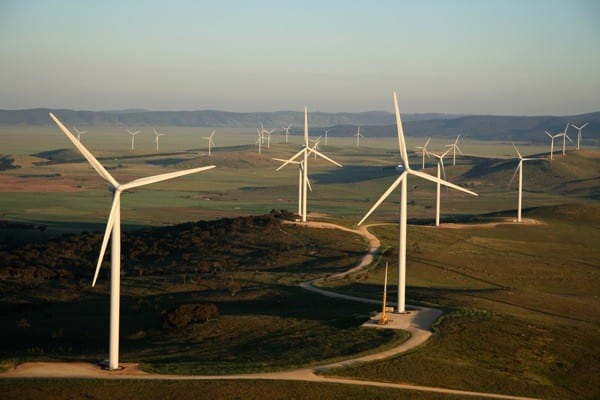The investment drought that has plagued the Australian large-scale renewable energy industry for the last two years could extend for another six to 18 months, with big and small electricity retailers showing no interest in contracting new wind or solar projects.
Infigen Energy said on Monday that the deal to cut the large-scale renewable energy target from 41,000GWh to 33,000GWh has yet to have any impact on the market, or to send a signal to retailers to contract new construction.
Infigen CEO Miles George says it could be six to 18 months before retailers will start to act. “The big three are in no hurry to contract now,” he told a conference call on Monday for the release of its annual results.
This confirms the indications from Origin Energy, AGL Energy and EnergyAustralia in recent weeks that they were not interested in writing long-term pricing contracts, either because of perceptions about the policy environment in Australia or because they had enough renewable energy certificates on their books.
Renewable energy investment in Australia plunged nearly 90 per cent since the election of the Abbott government, and even after the slashing of the RET the only projects going ahead now are those supported by the ACT government’s own renewable energy scheme (Ararat, Coonooer Bridge and Hornsdale).
Some big turbine manufacturers may enter the market on a “merchant basis” – taking the price risk – because they have the balance sheet to do so. This includes Suzlon’s Ceres project in South Australia and Goldwind’s project in NSW, and Infigen says it recently sold stakes in two wind projects with an unnamed wind turbine supplier with a mind to do the same thing.
The only other activity in the market has come from Queensland, where Ergon Energy has called for a tender for 150MW of renewable energy and the Queensland government has foreshadowed a tender for 40MW; and in Victoria, which has announced an initiative that may get a small number of wind turbines built.
In the meantime, the renewable energy developers are virtually hamstrung. Infigen Energy, despite the sale of its US wind and solar assets, remains loaded down with relatively high debt levels, so can’t develop projects on its own.
Pacific Hydro, the other major Australian developer, is up for sale and not in the construction market. Meridian Energy, the $5 billion New Zealand renewable energy giant, says it is not interested in investing in new wind farms in Australia as long as it is run by a government which does not like renewable energy.
George says eventually retailers will have to come to market to meet their obligations. A surplus of renewable energy certificates will run out in 2018, and it will take around two years to build a wind farm.
For the moment, though, they appear to be happy not to move, betting – as AGL Energy CEO Andrew Vesey suggested this month – that an Abbott government could change the target again.
All three big energy retailers are also pushing for government assistance to close coal-fired power stations before moving ahead with renewables.
One option is to approach the commercial and industrial (C&I) market directly. George said that the retailers are concerned only with their “mass market” obligations and are leaving the C&I market to their own devices. This is a strong market in the US, with many big companies financing the construction of wind farms and big solar projects, but it has yet to take off in Australia, apart from some rooftop solar.
George says the financial component of the Australian market is already at a point that could support new contracts, as this graph below indicates. He pointed to research by Bloomberg New Energy Finance that showed that wind farms could be developed for $80-$95 per megawatt-hour. The ACT wind auction suggested the same range, or even lower.
The one benefit is that, because of this investment drought, the price of RECs has jumped to near record highs of $52/MWh. That means companies like Infigen, which gets more than half of its revenue from the open market, will see a big lift in revenue, around $25 million at current prices. But it doesn’t help project developers with no wind farms operating.
Infigen has a relatively large pipeline of projects , some 1,200MW in all, most of which have planning approval but can’t be developed with a long-term contract or a joint venture agreement.
George says that there was so much uncertainty created by the latest RET Review that it could be some time before prices “rise to the level where there is such a premium on merchant price over contracted price so that one of them will break ranks.
“At some point those parties will be incentivised to contract,” George said. “Unless they all want to pay the penalty price, they will have to do something.”
The federal government has commissioned the Clean Energy Regulator to do a regular update on the state of the market. The first one is due in April.
The industry is hopeful that this could be used as an incentive to push the industry along. But some fear – given the rhetoric from the Abbott government about renewable energy – that it could be used as an excuse to further weaken the target, despite the government’s promise not to do so before 2020.
Infigen reported a net loss of $304 million as it took a major hit from the write down of its US wind assets, which it sold to reduce its debt burden. It said wind conditions had been particularly poor in the last financial year, but were expected to improve.












